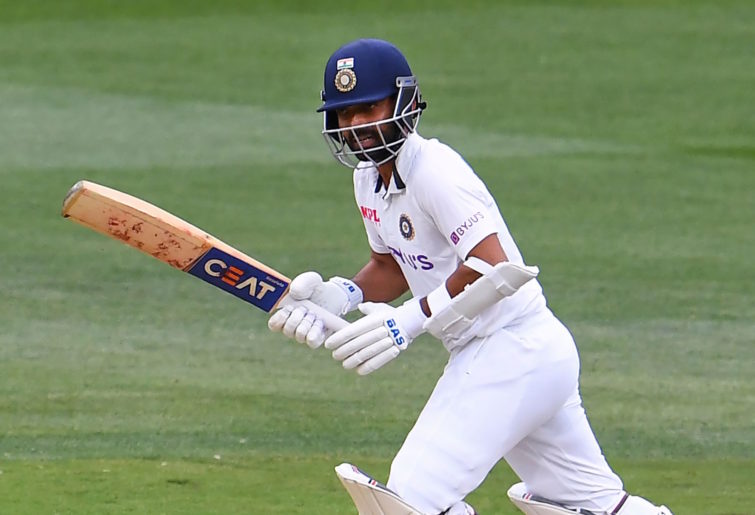Virat Kohli absolutely filthy after his wicket was upheld on controversial waist-high delivery
The Third Umpire ruled that he was standing outside his crease and the ball was dipping, making it a fair delivery - but the…
Opinion
In my previous article on The Roar titled ‘Hope and defiance: Cricket in 2020’, I had asked this question: will the Boxing Day Test witness 2020’s last act of defiance by a team or will India let the events of that Saturday morning in Adelaide get the better of them?
The Indian team provided an emphatic answer to my question and registered 2020’s last act of defiance on the cricket field.
Let’s look at how the Indian team defied the odds at the MCG.
India made positive changes in the team by bringing in the in-form Shubman Gill to replace the out-of-form Prithvi Shaw. They filled in Virat Kohli’s absence with all-rounder Ravindra Jadeja and replaced Wriddhiman Saha with Rishabh Pant. All the moves were focused on adding depth, fast scoring ability and variety to the batting unit.
When India have done well in Tests, they have had at least one positive opening batsman. Virendar Sehwag, for example, put the opposition bowlers under pressure from the start through his free-scoring ways. We saw India pile up big scores during that period.
Mayank Agrawal helped the cause in the second half of the Border-Gavaskar Trophy in 2018 with his positive approach. However, in this series, Mayank has found scoring tough. With a slow starter in the form of Cheteshwar Pujara coming in at three, Australian bowlers denied India the runs and India found themselves stuck at the start.
In the second Test, India found a positive opener in Gill, and it helped India get off to a good start. Gill took his chances and scored runs at the beginning of each innings and prevented the Australian bowlers from setting the tone of the Indian innings.
Rishabh Pant came into bat at a crucial time and played freely, pushing the India scoring rate higher. The left-hand, right-hand combination of Pant and Ajinkya Rahane disturbed the rhythm of the otherwise stifling Australian attack.
Ravindra Jadeja walked in at the fall of Pant and continued this free scoring in the Indian innings. The impact of adding the two left handers into the top order ensured that the Aussie bowling attack could not sit on a line and length and suck the air out of the batsmen.
Ajinkya Rahane showed the steel in him when the team had its back to the wall.

(Photo by William West/AFP via Getty Images)
Rahane was watchful during the initial part of his innings alongside Hanuma Vihari. Once Pant came in and gave the push to the scoring rate, Rahane started to score freely. Rahane drove, cut and pulled with confidence, taking the Indian score well past the Australian first innings.
In the second innings, when the team was in a bit of trouble at 2-19, Rahane came in and played positively, snubbing the faintest of hopes in the Aussie camp. Once again, Gill scored freely and helped India register an emphatic eight-wicket win
The batting defiance came through positive changes to the team and a positive run-scoring approach in the middle.
The positive approach continued on the bowling side as well. India had to replace Mohammed Shami at the start of the second Test. The team found an able replacement in Mohammed Siraj.
India had to cover up the absence of Umesh Yadav in the middle of the Test. The rest of the bowlers rallied around and kept the choke hold on the Aussie batsmen.
With the inclusion of Jadeja, India had five Test bowling options in this Test match. This move helped Rahane to attack the Australian batting relentlessly. Even in the second innings, when India were a bowler down, Australia could score only score at two runs an over.
Jasprit Bumrah emerged as the leader of the bowling pack at the MCG. In the 2018 Boxing Day Test, he had flattened the Aussies with a six-for. In this match, he did not run through the Aussies but took vital wickets at crucial moments.
He got rid of Steve Smith in the second innings when he looked like would finally settle in. Bumrah then removed Pat Cummins on Day 4 to end the mid-innings resistance put on by Cummins and Cameron Green.
It was a tribute to the management’s long-term team-building strategy that the team filled in Shami’s gap seamlessly with Siraj. Siraj’s bowling is most suited for Test matches, and he relished bowling long spells at the MCG. The highlight of his bowling was when he set up Green for leg before wicket in the first innings. Siraj followed up his first-innings spell with a fantastic disciplined effort in the Australian second innings as well.
Ravichandran Ashwin played different roles at different points in the Test. When there was turn and bounce on the first day, he used it to perfection, getting the big names out. Later in the second innings, he held one end up with tight bowling, while Rahane rotated his seamers at the other end. The ball that took Marnus Labuschagne’s wicket was my highlight of Ashwin’s bowling in this match.

(Photo by Peter Mundy/Speed Media/Icon Sportswire via Getty Images)
Ravindra Jadeja chipped in with useful wickets in the second innings, trapping the well set Mathew Wade leg before wicket and then accounting for the Aussie skipper Tim Paine as well.
To add to the effectiveness of the bowling unit, the Indians fielded and caught brilliantly. The poor fielding effort in Adelaide set the tone for the second innings debacle. They had learnt their lessons from that debacle.
Another change was how well the bowlers bowled to Australia’s lower order in the second innings. India’s struggles against the lower order batsmen of opposition teams is a well documented one. In the second innings, in good batting conditions, they bowled tight line and length, dried up the runs and allowed the lower order batsmen to commit the mistakes.
In the earlier matches, the bowling unit would bowl both sides of the wicket, trying too hard to blast out the lower order. I hope that sanity prevails in the future as well in this aspect of bowling.
When India scored 42 all out in 1974, they followed that Test match with an innings defeat. However, this time, they followed the Adelaide failure with their best performance of the decade. In keeping with my 2020 theme of hope and defiance, this Indian team’s performance will rank among the finest act of defiance this decade has seen.